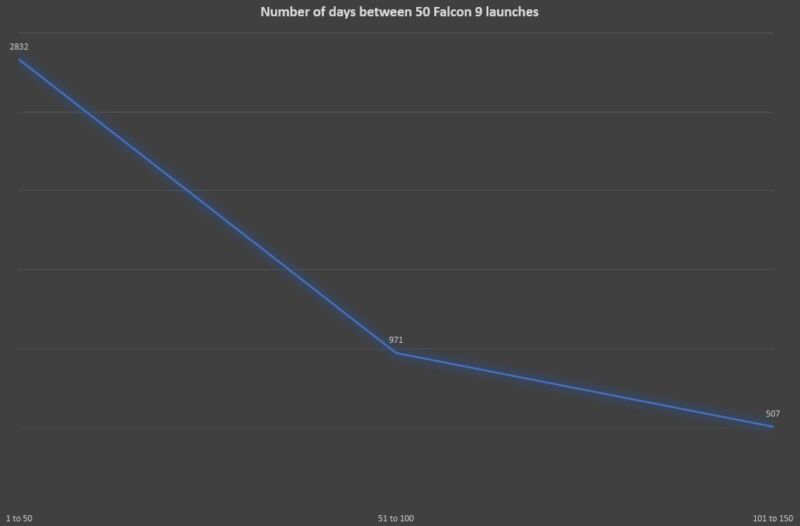After flying 150th Falcon 9, SpaceX continues to make efficiency gains

Enlarge / The number of days between the first 50 Falcon 9 launches, the second 50, and the last 50. (credit: Eric Berger)
SpaceX launched its first Falcon 9 rocket on June 4, 2010, nearly a dozen years ago. During those first years, the company grappled with a whole host of challenges, from things as seemingly simple as trying to transport the rocket over land instead of by sea or air to more demanding tasks such as producing enough Merlin engines.
The company's first 50 flights took nearly eight years to complete, and in that time SpaceX engineers and technicians learned much about building large rockets, testing and transporting them, and then flying them. From 2010 to early 2018 SpaceX would make three major "block" upgrades to the rocket, as well as debuting the Falcon Heavy variant of the booster.
During this learning period of activity, SpaceX managed to launch a Falcon 9 rocket only every 56.6 days. As it started to experiment with reusing the first stage, of its first 50 launches, seven of those were on reused rockets. Also during this learning period, SpaceX had one launch failure, CRS-7 in 2015, and one failure during pre-launch activities, the Amos-6 accident in 2016.
Read 9 remaining paragraphs | Comments